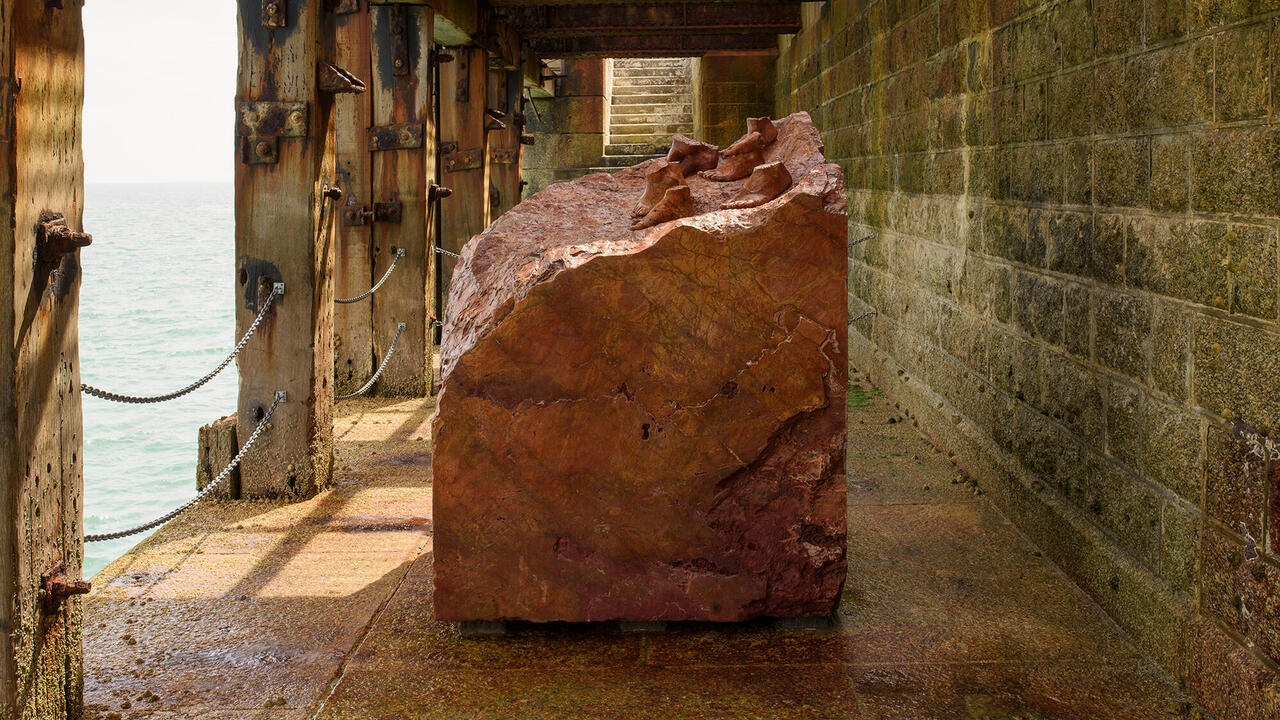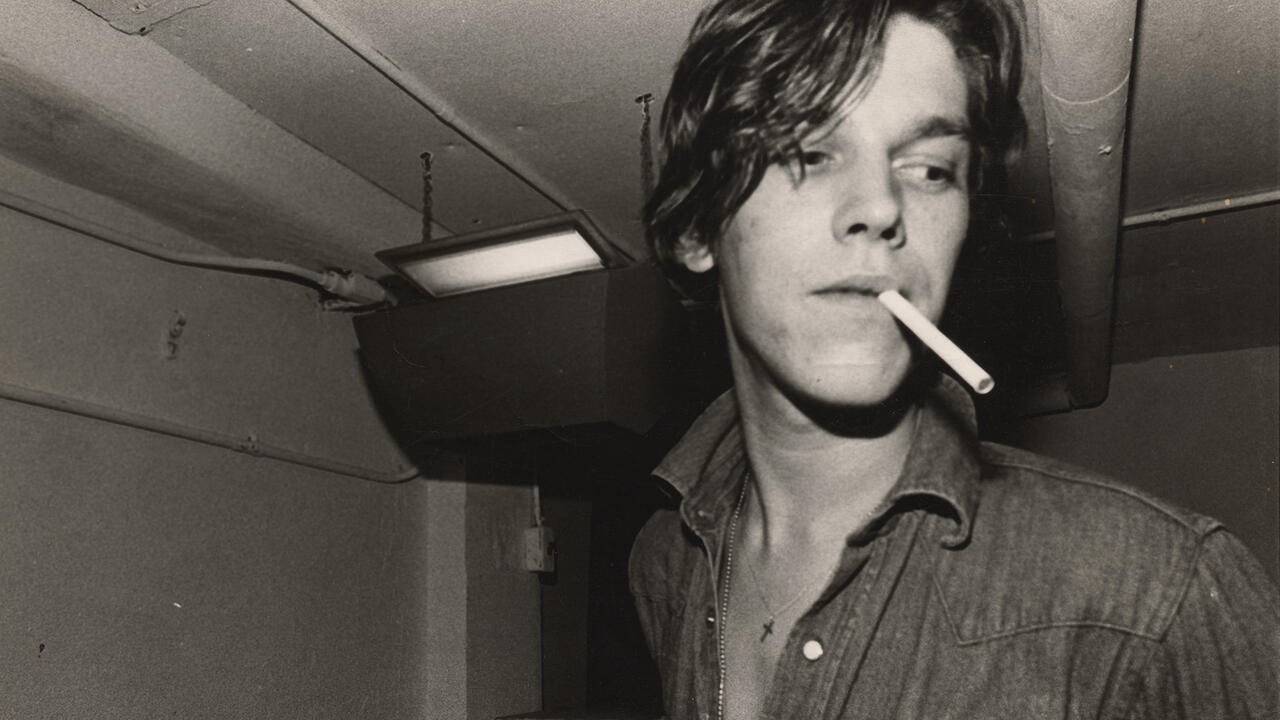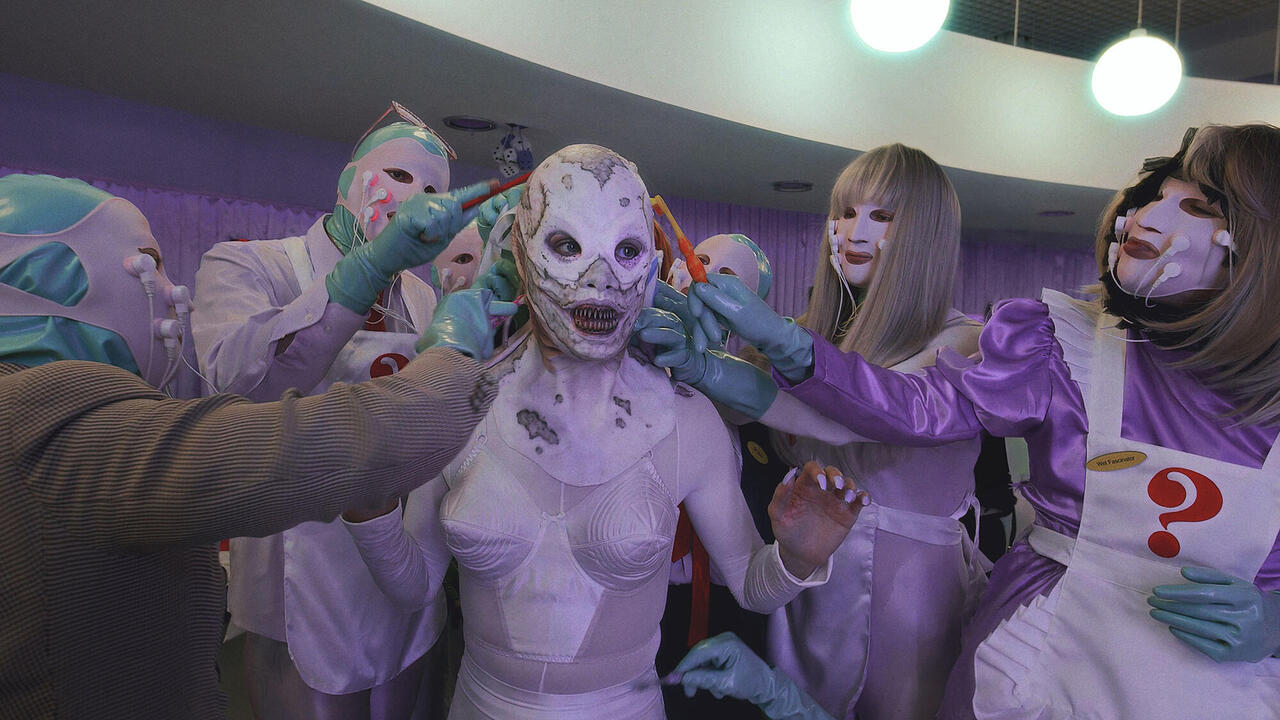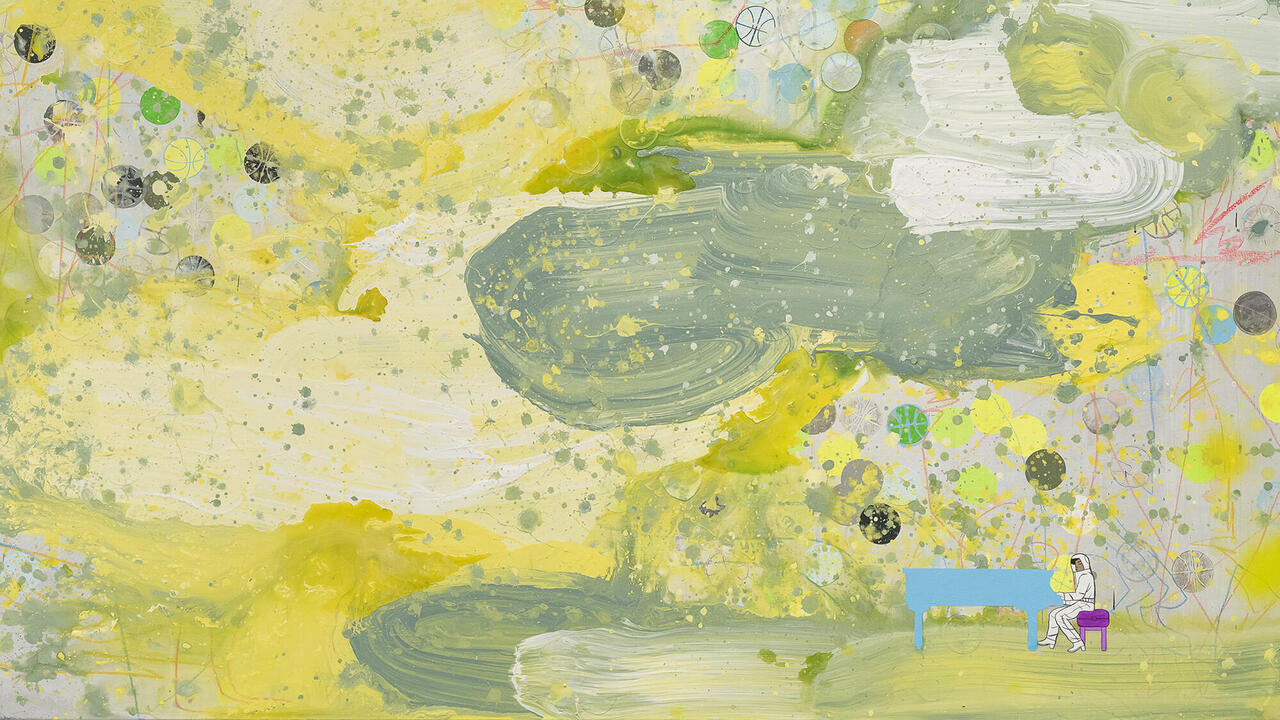James Lomax Turns Back Time
At Sid Motion Gallery, London, the artist engages with states of freedom and imprisonment in works that recall the COVID-19 lockdowns
At Sid Motion Gallery, London, the artist engages with states of freedom and imprisonment in works that recall the COVID-19 lockdowns

As its title suggests, James Lomax’s ‘A Tale of Two Cities’ presents several dualities. The exhibition, which includes a set of photographs and a series of concrete casts, engages with the states of freedom and imprisonment. Much of the work on display was conceived during a residency the artist completed earlier this year at HMP Grendon in Buckinghamshire; two works in the exhibition were first displayed within the prison, only accessible to those who live or work there. In this second iteration at Sid Motion Gallery, the work is presented in one of two states: with daylight rushing in through the gallery’s large windows or with four streetlamps illuminating the gallery space at dusk. These artificial lights, of a variety no longer used on British streets but still found in the country’s prisons, shine a different light on Lomax’s monochrome casts, their harsh yellow obscuring most of the works’ more intricate details, transfiguring their colours and turning the artist’s output into two distinct shows.

The photographs depict scenes of London during the COVID-19 lockdowns: letters piled up in an abandoned office building; a single rose on a table in an empty cafe. There’s something unnerving about the mundanity of these images, which capture the prevalent feeling of the time: that, after years of cultural anxiety about it, the apocalypse had arrived, yet life somehow carried on. The prolonged cost-of-living crisis, however, meant that many of these shuttered businesses never recovered – just as many people tragically never recovered from COVID-19.

Looking at the photographs, as with any work behind glass in a gallery, viewers can see their reflections. Although in some instances this effect can be irritating, obscuring the image beneath, here it serves to emphasize the sense of separation and depopulation that runs through the exhibition. Viewers in the gallery, reflected in the glass, almost seem to be looking out from the buildings depicted, trapped inside like prisoners. The photographs are punctuated by concrete casts of a rose and some unopened envelopes, in various shades of pink, grey, yellow and blue. Being casts of objects, they jut out from their backgrounds, which made me want to pick them up – but, of course, they’re fixed to the canvas. In this, Lomax conveys some sense of the restrictions and frustrations that are a permanent experience for prisoners, but were a temporary reality for everyone during the pandemic.

Two accompanying texts by Ava Alvarez and Nick London are an essential part of the exhibition. In her essay, Alvarez offers more detail on the low-sodium vapour lamps that provide light in the gallery during dark British winter afternoons. A former resident at HMP Grendon and contributor to Inside Time – the UK newspaper for prisoners – London writes about the experience of being incarcerated during the pandemic; he identifies ‘the preserved relics’ of that time and place within Lomax’s work. This raises a pertinent question: can a world that proved so keen to forget about the lockdowns and resume ‘normal’ life ever truly do so? Lomax’s minimal, disquieting work takes us back to that moment in time where everything stopped for an indefinite period, reminding us of the shared anxieties about how long it might last and whether life would be the same afterwards. Confronting us with the quiet devastation that followed, it asks why we would have wanted life to be the same, and if it might be worth returning to that moment, early in the pandemic, when it felt like something different could have been built out of the interregnum.
James Lomax’s ‘A Tale of Two Cities’ is on view at Sid Motion Gallery, London, until 18 January 2025
Main image: James Lomax, Store front (detail), 2024, reinforced concrete, welded aluminium frame, 1 × 1.2 m. Courtesy: the artist and Sid Motion Gallery; photograph: Francis Ware






















